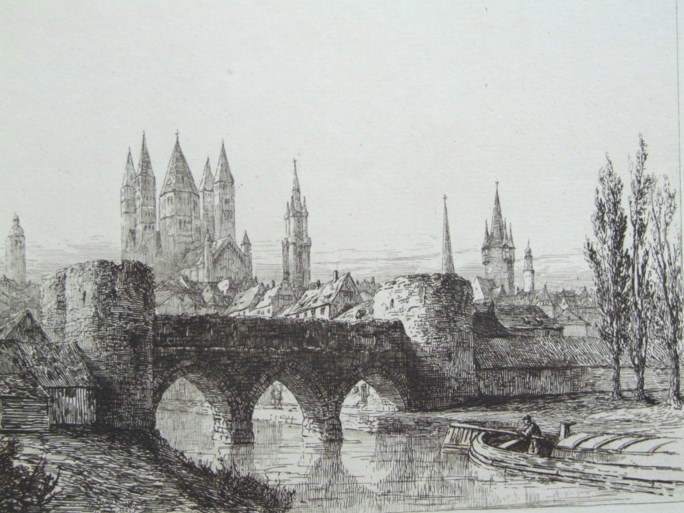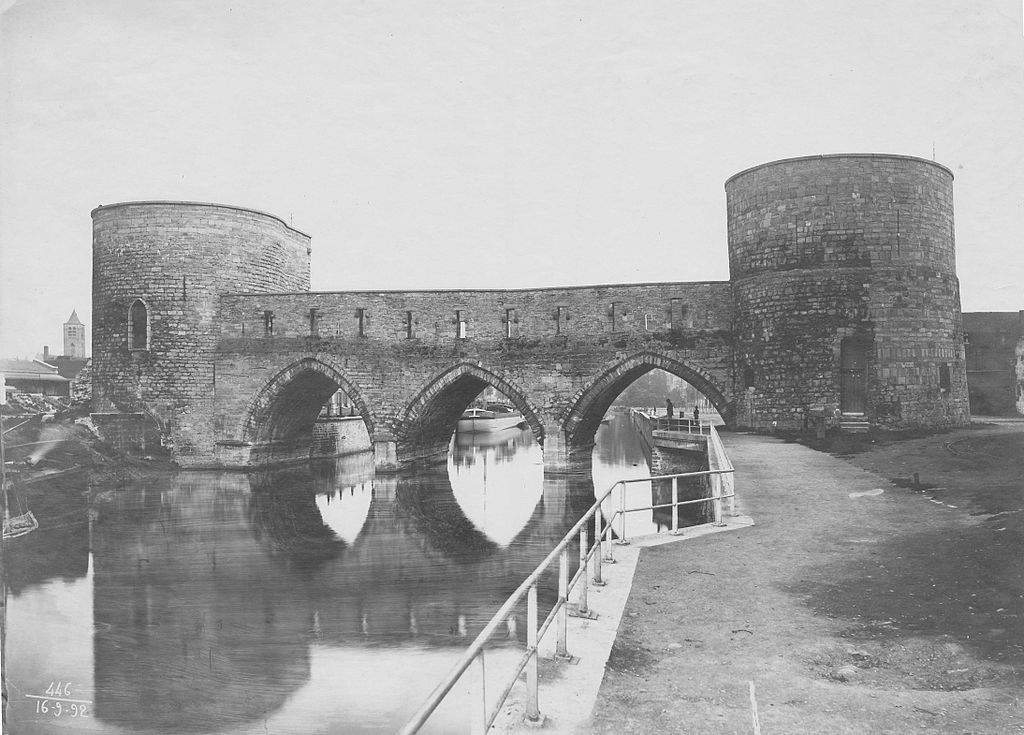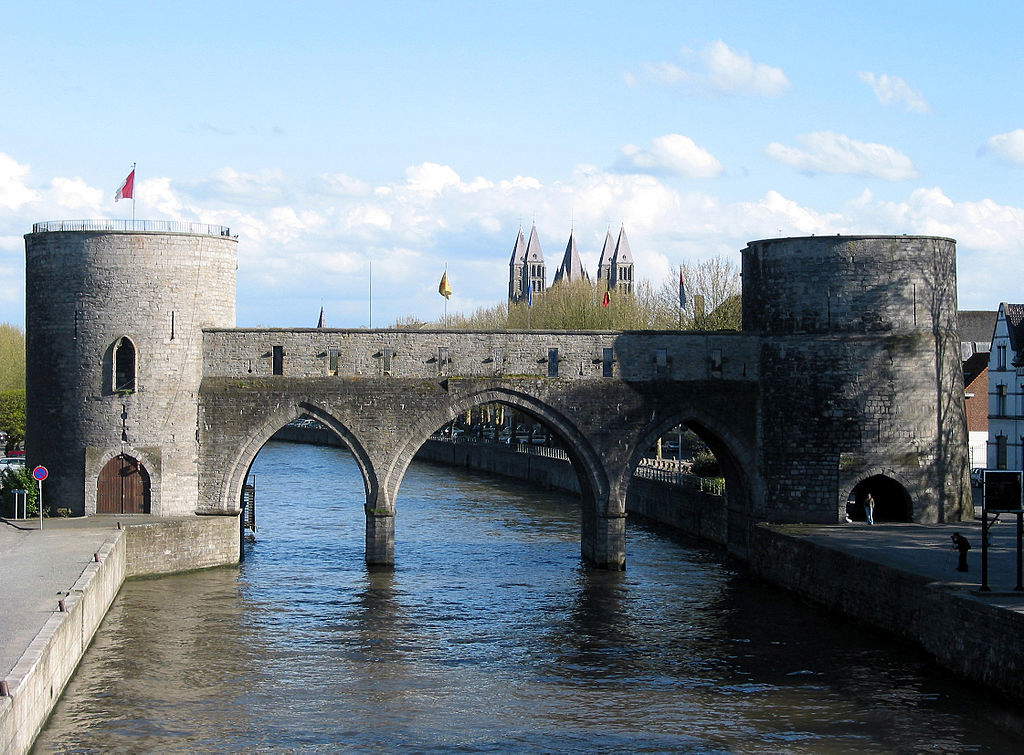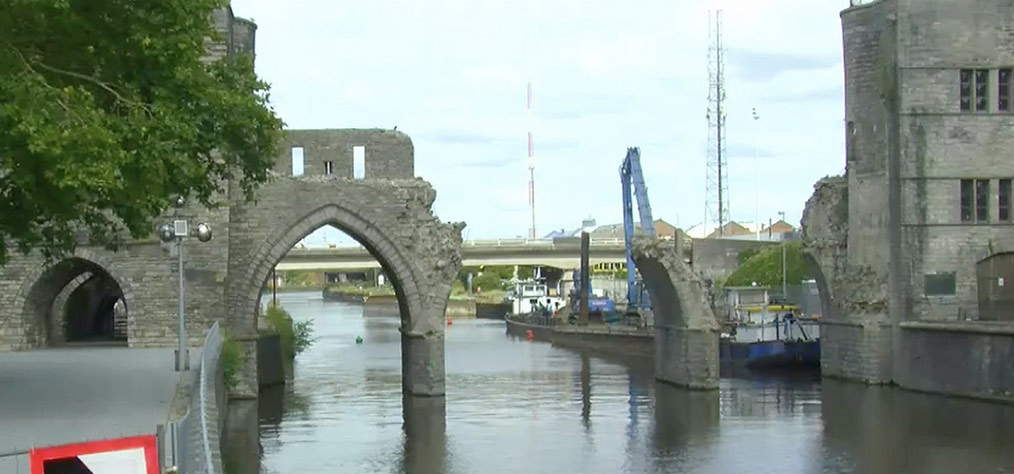Advocates of the demolition of the Pont des Trous, the medieval bridge in Tournai, Belgium, which will be “deconstructed” (this is the politically correct term used to cover reality with a light and transparent veil) to allow the passage of boats larger than those that usually ply the Scheldt River (it is being increased from the current 1,500 to 2,000 tons), continue to be at pains to point out that the bridge was partially rebuilt following the damage of World War II. It is true: the history of this bridge is quite complex. All that remains of the original structure are the two towers: the arches were undermined by the British during World War II, the central one was blown up and the lateral ones severely damaged, and they were rebuilt after the war, with the central arch raised and the lateral ones lowered from the original construction erected between 1281 and 1304 (yes, even at the end of the war there was the problem of allowing taller boats to pass under the bridge than those that plied the Scheldt in ancient times). It is therefore true that by the postwar period the bridge was no longer what it originally was. But to demolish it in order to rebuild it, even if in similar form to what it had before, seems a completely wrong choice.
Meanwhile, for pure reasons of historical stratification. Even if the forms were no longer those of the 14th century, the alterations that had led the postwar restorers to raise the central arch by 2.40 meters and lower the lateral ones by one meter, are still part of the bridge’s history, a sort of photograph of a historical moment and a mentality (the often frantic desire to recover from the tragedy of the conflict: we know it well in Italy) that, until a few hours ago, still survived. We might also consider the loss of three arches rebuilt after the war as untragic, but consider that the value of a historical monument lies not only in the mere age of its stones: there is an intangible value that must be equally preserved. As of yesterday, a portion of the history of the Pont des Trous (and of this intangible value) has been deliberately erased: the message has been passed along that the reasons of economics (and, in this case, those of the intensive navigation that, it is assumed, will take the course of the Scheldt) can outweigh those of history.
 |
| The Pont des Trous in a 19th-century engraving by Ernest George |
 |
| The Pont des Trous in 1892 |
 |
| The Pont des Trous before after postwar renovations and before demolition in 2019 |
 |
| The Pont des Trous during demolition work in August 2019 |
And this is the second mistake. If such a message were to find more and more right of citizenship with local governments, then we would no longer find ourselves discussing small or large issues, starting with the passage of large ships in Venice and ending with the presence of stalls in Piazza dei Miracoli in Pisa. Not to mention that such an operation could provide extra arguments for those who decide to dismantle arches of seventeenth-century aqueducts to allow the passage of bypasses (if in the case of the Tournai Bridge the main argument is “the three arches were rebuilt after the war,” for theMedici Aqueduct in Pisa the proponents of demolition argued that “so much is badly preserved and in several places is already destroyed.” and between the motives of the Tournai demolitionists and those of the Pisa demolitionists, I see no great difference) or to those who believe that the only way to secure a stream that passes through the historic center of Carrara is toeliminate all the bridges that cross it, including the old ones. In Tournai, in fact, a dangerous precedent has been set.
It will then be worth remembering that if the idea were to unfortunate spread in Italy that non-original parts of a building can be modified at will (whatever the reason), then we should not make too much of a fuss if someone came up with the idea of raising or lowering the Santa Trinita bridge in Florence or the Scaligero bridge in Verona (both rebuilt after World War II), raising the bell tower of St. Mark’s in Venice by a few meters (rebuilt after the collapse of 1902), adding a tower to Castel del Monte (whose appearance was altered by 20th-century restorations). It will be objected that the forms of the monuments just mentioned are quite similar to those of the originals: but the reconstruction could not be conducted with materials that were totally salvaged, and the technologies adopted for the operations were often not those used for ancient buildings. Nevertheless, we would never dream of intervening on the Scaliger Bridge in Verona because part of the stones with which it is currently built were quarried from scratch after the war. Or do we want to believe that a monument reconstructed in recent times automatically becomes a second-class work? Moreover, compared to some of the cases just mentioned, the original parts of the Pont des Trous even survive to a greater extent. And it makes little difference that the Tournai Bridge appears in different forms than the original-a mistake that was made after the war. And it might be a good idea not to add error upon error. Supporters of the demolition of the Pont de Trous should ask themselves a question: how would we be arguing today, if only the 1948 restorers had rebuilt the bridge keeping the previous forms, instead of proceeding with the changes we have all become familiar with?
Warning: the translation into English of the original Italian article was created using automatic tools. We undertake to review all articles, but we do not guarantee the total absence of inaccuracies in the translation due to the program. You can find the original by clicking on the ITA button. If you find any mistake,please contact us.